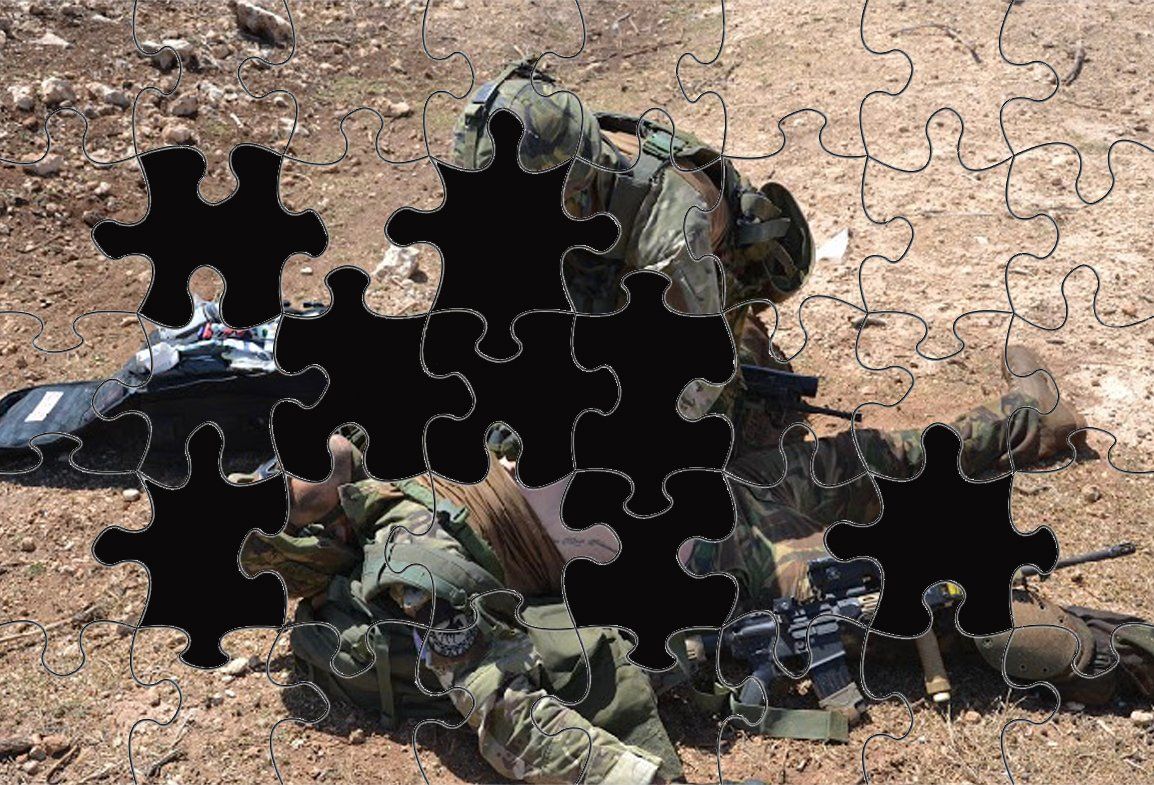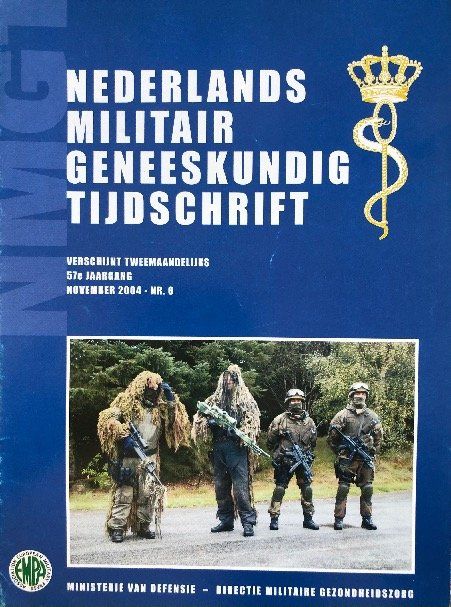Why I recommend this book
Frontline Training
Handbook for education and training for frontline professionals
Author: Erik Hein
Combining military and medical tasks in life-threatening situations places high demands on the education and training of these professionals. Applying Tactical Combat Casualty Care (TCCC), the doctrine we use in the Netherlands in military prehospital healthcare, in an operational environment, is more than just learning a number of prescribed hard skills. More is needed to prepare operators for deployment and to achieve the goal, namely 'zero preventable deaths'. That 'more' concerns human skills and didactic skills.
With Frontline Training Erik Hein has succeeded in combining national and international knowledge and experience, both civil and military, regarding education and training of frontline professionals, thus offering a broad and up-to-date overview of the most current scientific knowledge in the field of conflict management. and violence control and of education and training in these areas. Information that is necessary for everyone involved in education and training of frontline professions to achieve objectives. For Tactical Combat Casualty Care related professions, this book, together with the publicly available TCCC training curriculum (www.deployedmedicine.com) forms a thorough basis for educators and trainers.
Erik Hein scanned the international literature and brought it together in 21 essential parts or ;building blocks’. Jaap Timmer writes in the foreword: ”building block 22 number could be: develop a clear set of proven and successful working methods (procedures, drills) for (potentially) dangerous situations for each task field and train the officers in this. In that regard, we can use the TCCC guidelines within the expertise area of Tactical Medicine, within which four training levels can be distinguished (Tier 1 to 4).
In parts 1 and 2 of the book the 21 building blocks are elaborated and in the third part the experiences and visions of a number of teachers, trainers and researchers from military and civilian practice are presented.
21 evidence-based building blocks for Frontline training
- Mission and vision
Conflict management and violence management trainers need a mission and a vision for their profession as a foundation for effective and accountable education. In this building block, a mission and a vision are provided.
2. Situation awareness
Simply put, situation awareness means 'knowing what is happening'. The image you have of the situation will determine your actions. Situation awareness is the first and crucial step in all actions we take during conflict management and violence management.
3. Judging and Deciding
After processing and interpreting all information in the 'situation awareness' phase, the next step is to judge and decide what to do. Researchers believe that violence professionals should above all be 'expert decision-makers'. Depending on the situation, decision-making can be done in several ways. In order to provide trainers with tools, some models and applications for the training are discussed.
4. Develop adaptive expertise
The aim of the first responder training is to train adaptive experts: professionals who can use their knowledge, skills and attitude at the right time. And they can switch between routine situations and non-routine situations. This requires targeted training.
5. Communication
This building block is about effective communication in the conflict management and violence management training. This concerns communication from trainer to participants and communication strategies that participants can use in their work. The latter includes communication with the public, mutual and tactical communication, crisis communication and communication in negotiation situations.
6. Act tactfully
Acting tactfully is one of the three pillars of our vision on conflict management and violence control. The other two are confidence and tactics. Acting tactfully is acting in such a way that security is guaranteed and that the rule of law is protected and maintained, while at the same time we remain in relationship and maintain trust. Acting tactfully is always a balance between security and relationship.
7. Leadership and assertive followership
Leadership is an important building block, also in training. In other words, especially in training. Leadership, in the words of Admiral William McRaven, is to create the conditions for others to do their best work. Leadership is not possible without assertive followership, i.e. professionals who can listen and execute well, but also think along and ask the right questions.
8. Teamwork
Collaboration occurs when people work in teams towards a common goal. In this building block, trainers are given some tools to provide effective team training aimed at collaboration.
9. Tactical action and physical intervention
This building block is about actually acting in conflict and violent situations.
10. Dealing with Stress and Fatigue
Acute and chronic stress and fatigue affect performance. In these building blocks we discuss what stress and fatigue are, the difference with performing under pressure and what effects they have on performance in conflict and violence management situations.
11. Dealing with Emotions
This building block was written especially for this book by Sports & Performance Psychologists Sebastiaan Buurma and Vincent Siderius. Both specialize in optimal human functioning and believe that using emotional intelligence is key to maximizing performance and mental health. Developing practical and qualitative tools based on the sharpest scientific insights, with which everyone can learn to apply emotional intelligence.
12. Moral Power
This building block was written by Drs. Mirjam van Limpt, who works for the police academy in the Netherlands. She is a psychologist, teacher/trainer/researcher in moral capacity and counselor on moral and mental issues. From her description of the moral dimension of professional action, trainers can design education and training in which the elements of moral ability are made explicit and can be practiced.
13. Non-Technical Skills
In this building block, the evidence-based and internationally renowned seven non-technical skills (NTV) are elaborated into fifteen core behaviors from crew resource management. Training this NTV is the most effective way to turn groups into real teams, who achieve their goals and tasks safely and effectively.
14. Vision of Teaching
You don't just teach. As a trainer you are not neutral. What you do and what you don't do has to do with your own view of education and training. This building block describes an educational vision that can serve as a starting point for your own way of working.
15. Know Yourself
Participants do not see a 'trade' but a person. The trainer always takes himself to the training and his own personal characteristics largely determine the effect of the training. Effective training requires that a trainer is aware of his professional roles, the influence of his own behavior and important personal characteristics.
16. Knowing how people learn
You can't teach until you know how people learn. If you know how people process information and convert it into learning. If you know what role reinforcement, punishment and active knowledge building play. If you have knowledge of social learning but also experiential learning and current motor learning theories. This chapter discusses the five most important theories of learning psychology and some influential models in the field of learning.
17. Excellent teaching.
In the previous building block you learn how people learn. Fitting into this building block is applied in didactics and methodology. It is discussed how you transfer something and in what order.
18. Reflecting and Giving Feedback
We do it every day as a trainer: giving feedback and guiding reflection. But how does it work and what is effective? This building block discusses what you as a trainer need to know about feedback and reflection and the difference between the two. Attention is also paid to 'the art of asking questions', which is an underlying basic skill for feedback and guiding reflection.
19. Scenario and Simulation Training
Here we briefly discuss what a simulation and what a scenario is. Simulation training is the imitation of (part of) reality. It's pretending. Children do it when they play "mother and father" or "war". And in our heads we simulate future situations all day long and we think about what we are going to do and say in those situations. Simulation training is a form of experiential learning that is very similar to practice and therefore has a large transfer to that practice. A scenario is a description of a particular event or series of events that have occurred or are yet to occur. During a simulation training you simulate certain scenarios with more or fewer variables and choices.
20. Stress Exposure Training
Stress exposure training (SET) is an evidence-based method to teach people to perform better in stressful situations and under pressure.
21. Eight transfer keys
Training is a lie, is the title of a famous article. The message from the author: with no less than 70-80% of all training sessions, nothing is done in practice. The same sound comes from research by Jolanda Botke about training for the police: transfer is the Achilles heel of training. So the question is: why would you give training if nobody does anything with it and you leave the transfer to chance? Transfer of training is the extent to which what is learned in the training is applied in practice. Training is only successful according to PhD research by Jolanda Botke if organizations take transfer seriously: “if organizations aspire to improve such transfer, then they should be specific about the intended posttraining behaviors and performance and the situations in which these outcomes should emerge”. The good news is: improvement is possible, because with the so-called 'transfer keys' you can consciously influence transfer. This building block is largely based on the work of Dr. Ina Weinbauer-Heidel (‘What Makes Training Really Work’) and the work of Jolanda Botke. The latter obtained her doctorate for research into the transfer of soft skills training to the Dutch police.


